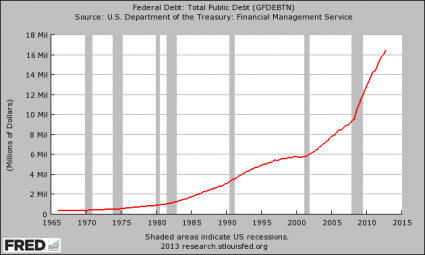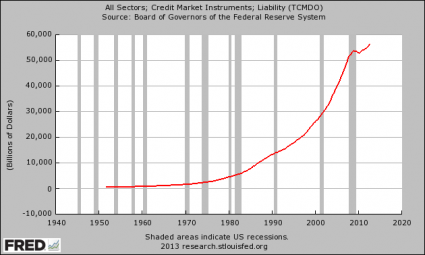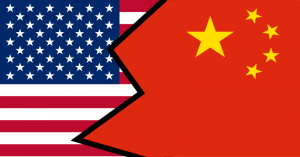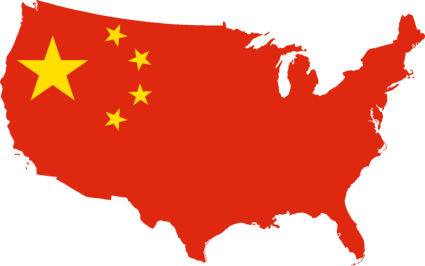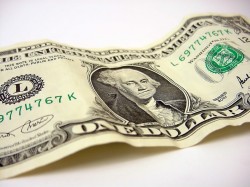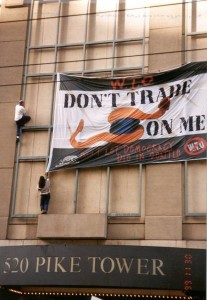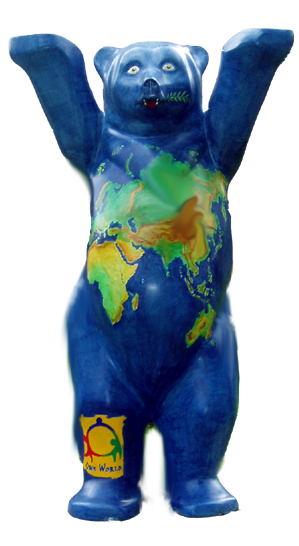 The number one American export is U.S. dollars. It is paper currency that is backed up by absolutely nothing, but the rest of the world has been using it to trade with one another and so there is tremendous global demand for our dollars. The linchpin of this system is the petrodollar. For decades, if you have wanted to buy oil virtually anywhere in the world you have had to do so with U.S. dollars. But if one of the biggest oil exporters on the planet, such as Saudi Arabia, decided to start accepting other currencies as payment for oil, the petrodollar monopoly would disintegrate very rapidly. For years, everyone assumed that nothing like that would happen any time soon, but now Saudi officials are warning of a “major shift” in relations with the United States. In fact, the Saudis are so upset at the Obama administration that “all options” are reportedly “on the table”. If it gets to the point where the Saudis decide to make a major move away from the petrodollar monopoly, it will be absolutely catastrophic for the U.S. economy.
The number one American export is U.S. dollars. It is paper currency that is backed up by absolutely nothing, but the rest of the world has been using it to trade with one another and so there is tremendous global demand for our dollars. The linchpin of this system is the petrodollar. For decades, if you have wanted to buy oil virtually anywhere in the world you have had to do so with U.S. dollars. But if one of the biggest oil exporters on the planet, such as Saudi Arabia, decided to start accepting other currencies as payment for oil, the petrodollar monopoly would disintegrate very rapidly. For years, everyone assumed that nothing like that would happen any time soon, but now Saudi officials are warning of a “major shift” in relations with the United States. In fact, the Saudis are so upset at the Obama administration that “all options” are reportedly “on the table”. If it gets to the point where the Saudis decide to make a major move away from the petrodollar monopoly, it will be absolutely catastrophic for the U.S. economy.
The biggest reason why having good relations with Saudi Arabia is so important to the United States is because the petrodollar monopoly will not work without them. For decades, Washington D.C. has gone to extraordinary lengths to keep the Saudis happy. But now the Saudis are becoming increasingly frustrated that the U.S. military is not being used to fight their wars for them. The following is from a recent Daily Mail report…
Upset at President Barack Obama’s policies on Iran and Syria, members of Saudi Arabia’s ruling family are threatening a rift with the United States that could take the alliance between Washington and the kingdom to its lowest point in years.
Saudi Arabia’s intelligence chief is vowing that the kingdom will make a ‘major shift’ in relations with the United States to protest perceived American inaction over Syria’s civil war as well as recent U.S. overtures to Iran, a source close to Saudi policy said on Tuesday.
Prince Bandar bin Sultan told European diplomats that the United States had failed to act effectively against Syrian President Bashar al-Assad and the Israeli-Palestinian conflict, was growing closer to Tehran, and had failed to back Saudi support for Bahrain when it crushed an anti-government revolt in 2011, the source said.
Saudi Arabia desperately wants the U.S. military to intervene in the Syrian civil war on the side of the “rebels”. This has not happened yet, and the Saudis are very upset about that.
Of course the Saudis could always go and fight their own war, but that is not the way that the Saudis do things.
So since the Saudis are not getting their way, they are threatening to punish the U.S. for their inaction. According to Reuters, the Saudis are saying that “all options are on the table now”…
Saudi Arabia, the world’s biggest oil exporter, ploughs much of its earnings back into U.S. assets. Most of the Saudi central bank’s net foreign assets of $690 billion are thought to be denominated in dollars, much of them in U.S. Treasury bonds.
“All options are on the table now, and for sure there will be some impact,” the Saudi source said.
Sadly, most Americans have absolutely no idea how important all of this is. If the Saudis break the petrodollar monopoly, it would severely damage the U.S. economy. For those that do not fully understand the importance of the petrodollar, the following is a good summary of how the petrodollar works from an article by Christopher Doran…
In a nutshell, any country that wants to purchase oil from an oil producing country has to do so in U.S. dollars. This is a long standing agreement within all oil exporting nations, aka OPEC, the Organization of Petroleum Exporting Countries. The UK for example, cannot simply buy oil from Saudi Arabia by exchanging British pounds. Instead, the UK must exchange its pounds for U.S. dollars. The major exception at present is, of course, Iran.
This means that every country in the world that imports oil—which is the vast majority of the world’s nations—has to have immense quantities of dollars in reserve. These dollars of course are not hidden under the proverbial national mattress. They are invested. And because they are U.S. dollars, they are invested in U.S. Treasury bills and other interest bearing securities that can be easily converted to purchase dollar-priced commodities like oil. This is what has allowed the U.S. to run up trillions of dollars of debt: the rest of the world simply buys up that debt in the form of U.S. interest bearing securities.
This arrangement works out very well for the United States because we can wildly print money and run up gigantic amounts of debt and the rest of the world gobbles it all up.
In 2012, the United States ran a trade deficit of about $540,000,000,000 with the rest of the planet. In other words, about half a trillion more dollars left the country than came into the country. These dollars represent the number one “product” that the U.S. exports. We make dollars and exchange them for the things that we need. Major exporting countries (such as Saudi Arabia) take many of those dollars and “invest” them in our debt at ultra-low interest rates. It is this system that makes our massively inflated standard of living possible.
When this system ends, the era of cheap imports and super low interest rates will be over and the “adjustment” to our standard of living will be excruciatingly painful.
And without a doubt, the day is rapidly approaching when the petrodollar monopoly will end.
Today, Russia is the number one exporter of oil in the world.
China is now the number one importer of oil in the world, and at this point they are actually importing more oil from Saudi Arabia than the United States is.
So why should Russia, China and virtually everyone else continue to be forced to use U.S. dollars to trade oil?
That is a very good question.
In fact, China has been making a whole lot of noise recently about the fact that it is time to start becoming less dependent on the U.S. dollar. The following comes from a recent CNBC article authored by Michael Pento…
Our addictions to debt and cheap money have finally caused our major international creditors to call for an end to dollar hegemony and to push for a “de-Americanized” world.
China, the largest U.S. creditor with $1.28 trillion in Treasury bonds, recently put out a commentary through the state-run Xinhua news agency stating that, “Such alarming days when the destinies of others are in the hands of a hypocritical nation have to be terminated.”
For much more on all of this, please see my previous article entitled “9 Signs That China Is Making A Move Against The U.S. Dollar“.
But you very rarely hear anything about this on the evening news, and most Americans do not understand these things at all. The fact that the U.S. produces the de facto reserve currency of the planet is an absolutely massive advantage for us. According to John Mauldin, this advantage allows us to consume far more wealth than we actually produce…
What that means in practical terms is that the United States can purchase more with its currency than it produces and sells. In theory those accounts should balance. But the world’s reserve currency, for all intent and purposes, becomes a product. The world needs dollars in order to conduct its trade. Today, if someone in Peru wants to buy something from Thailand, they first convert their local currency into US dollars and then purchase the product with those dollars. Those dollars eventually wind up at the Central Bank of Thailand, which includes them in its reserve balance. When someone in Thailand wants to purchase an imported product, their bank accesses those dollars, which may go anywhere in the world that will take the US dollar, which is to say pretty much anywhere.
And as Mauldin went on to explain in that same article, a significant amount of the money that we ship out to the rest of the globe ends up getting reinvested in U.S. government debt…
That privilege allows US citizens to purchase goods and services at prices somewhat lower than those people in the rest of the world must pay. We can produce electronic fiat dollars, and the rest of the world accepts them because they need them to in order to trade with each other. And they do so because they trust the dollar more than they do any other currency that is readily available. You can take those dollars and come to the United States and purchase all manner of goods, including real estate and stocks. Just this week a Chinese company spent $600 million to buy a building in New York City. Such transactions happen all the time.
And there is one other item those dollars are used to pay for: US Treasury bonds. We buy oil and all manner of goods with our electronic dollars, and those dollars typically end up on the reserve balance sheets of other central banks, which buy our government bonds. It’s hard to quantify the exact amount, but these transactions significantly lower the cost of borrowing for the US government. On a $16 trillion debt, every basis point (1/10 of 1%) means a saving of $16 billion annually. So 5 basis points would be $80 billion a year. There are credible estimates that the savings are well in excess of $100 billion a year. Thus, as the debt grows, the savings also grow! That also means the total debt compounds at a lower rate.
Unfortunately, this system only works if the rest of the planet has faith in it, and right now the United States is systematically destroying the faith that the rest of the world has in our financial system.
One way that this is being done is by our reckless accumulation of debt. The U.S. national debt is now 37 times larger than it was 40 years ago, and we are on pace to accumulate more new debt under the 8 years of the Obama administration than we did under all of the other presidents in U.S. history combined. The rest of the world is watching this and they are beginning to wonder if we are going to be able to pay them back the money that we owe them.
Quantitative easing is another factor that is severely damaging worldwide faith in the U.S. financial system. The rest of the globe is watching as the Federal Reserve wildly prints up money and monetizes our debt. They are beginning to wonder why they should continue to loan us gobs of money at super low interest rates when we are beginning to resemble the Weimar Republic.
The long-term damage that we are doing to the “U.S. brand” far, far outweighs any short-term benefits of quantitative easing.
And as Richard Koo has brilliantly demonstrated, quantitative easing is going to cause long-term interest rates to eventually rise much higher than they normally should have.
What all of this means is that the U.S. government and the Federal Reserve are systematically destroying the financial system that has enabled us to enjoy such a high standard of living for the past several decades.
Yes, the U.S. economy is not doing well at the moment, but we haven’t seen anything yet. When the monopoly of the petrodollar is broken, it is going to be absolutely devastating.
And as I wrote about the other day, when the next great economic crisis strikes it is going to pull back the curtain and reveal the rot and decay that have been eating away at the social fabric of America for a very long time.
Just check out what happened in Detroit recently. The new police chief was almost carjacked while he was sitting in a clearly marked police vehicle…
Just four months on the job, Detroit’s new police chief got an early taste of the city’s hardscrabble streets.
While in his patrol car at an intersection on Jefferson two weeks ago, Police Chief James Craig was nearly carjacked, police spokeswoman Kelly Miner confirmed today.
Craig said he was in a marked police car with mounted lights when a man quickly tried to approach the side of his car. Craig, who became police chief in June, retold the story Monday during a program designed to crack down on carjackings.
Isn’t that crazy?
These days, the criminals are not even afraid to go after the police while they are sitting in their own vehicles.
And this is just the beginning. Things are going to get much, much worse than this.
So let us hope that this period of relative stability that we are enjoying right now will last for as long as possible.
The times ahead are going to be extremely challenging, and I hope that you are getting ready for them.


